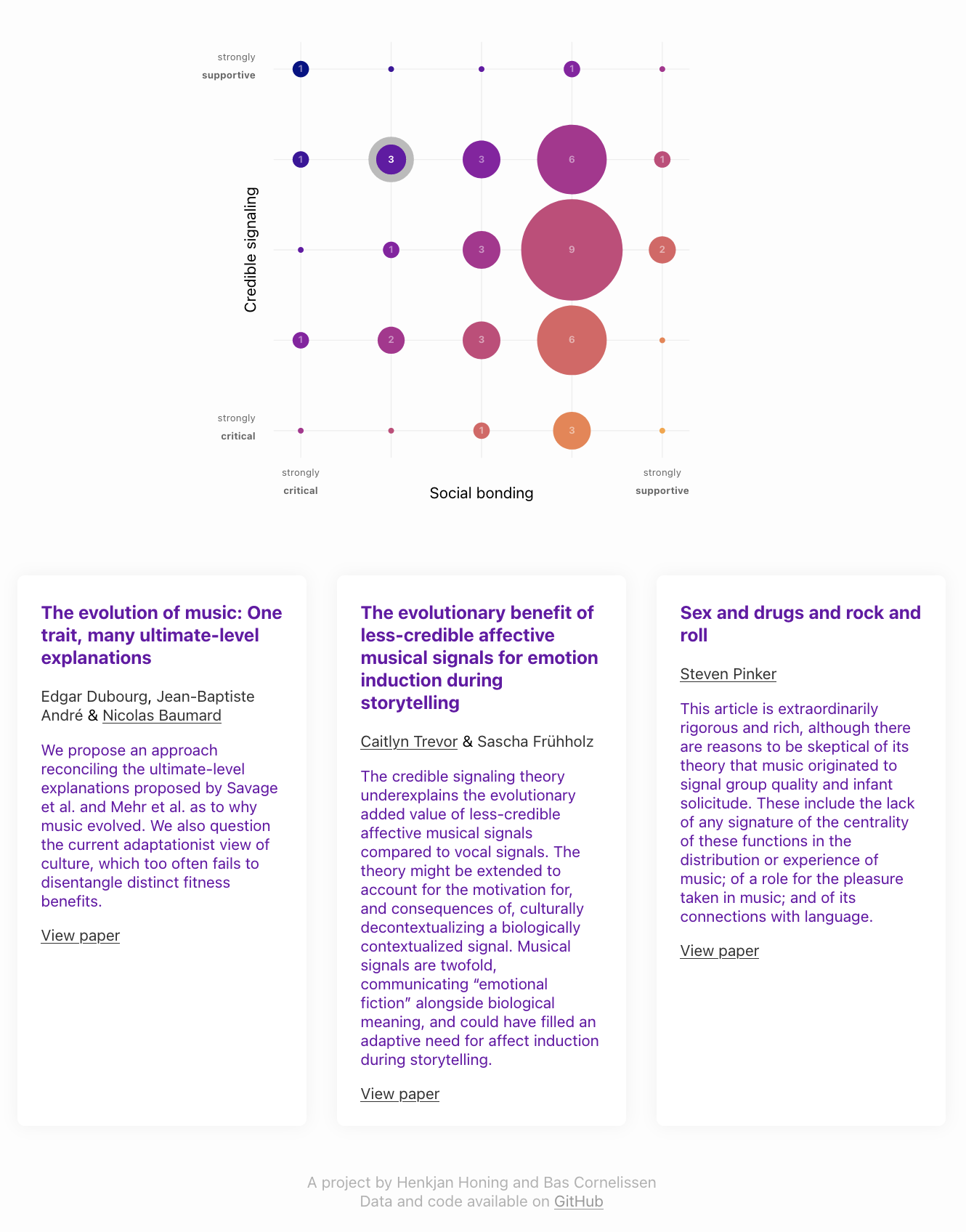This blog-entry adds several new analyses and visualizations related to the topic of the origins of music/ality, as discussed in a recent issue of Behavioral and Brain Sciences (BBS; cf. Mehr et al., 2021; Savage et al., 2021).
N.B. An interactive app, linking to the two target articles, the 60 commentaries, as well as the commentaries' position in this debate, can be found on GitHub.
The analyses presented below are based on a questionnaire that was send to the 60 commentary writers in 2021.
Fig. 1 shows the outcome of that questionnaire asking to rate one's own position w.r.t. the two target articles on a five point scale from Strongly Critical to Strongly Supportive (N.B. We received 49 responses):
 |
| Fig. 1a: Individual ratings from the BBS Commentary Authors (N=49). Numbers/size show the amount of votes. N.B. An interactive version, linking the individual ratings to the Commentaries, is shown below. |
 |
| Fig. 1b: Individual ratings from the BBS Commentary Authors (N=49). Numbers/size: amount of votes; Color: support for one or the other position. N.B. Click on the figure to run the interactive version, linking the individual ratings to the Commentaries. [Alternative figures, data, and source code at GitHub] |
Fig. 2 below shows the rating provided by Savage et al. (2021), where two raters judged the positions of all commentaries on the same two dimensions (but on a continuous scale):
 | |
| Fig. 2: Ratings from Savage et al. (2021: Figure R1). [Source code and data at GitHub] |
Furthermore, we also did some simple numerical comparisons between the data presented in Fig. 1 and 2. The main observations are:
- For the Social Bonding hypothesis there is an agreement* between ratings shown in Fig. 1 and those of Fig.2 of .62 (Rater 1/Authors) and .69 (Rater 2/Authors). As such, the raters did a relatively good job in estimating the authors positions.
- For the Credible Signalling hypothesis the agreement* was .51 (Rater 1/Authors) and .56 (Rater 2/Authors), suggesting the raters did less well in estimating the authors positions.
*Intraclass Correlation Coefficient (ICC). Note that resolution of both ratings (Fig. 1 and 2) differ, which could affect the results.
Fig 3. shows the results on the question whether this two-dimensional representation was considered adequate by the commentary authors:
 |
| Fig. 3: In how far are the two dimensions sufficient to capture your position (N=49)? [Alternative figures, data, and source code at GitHub] |
[Credits: Visualizations by Bas Cornelissen; Stats by Atser Damsma]
Savage, P., Loui, P., Tarr, B., Schachner, A., Glowacki, L., Mithen, S., & Fitch, W. (2021). Music as a coevolved system for social bonding. Behavioral and Brain Sciences, 44, E59. doi:10.1017/S0140525X20000333
Honing, H. (2021). Unravelling the origins of musicality: Beyond music as an epiphenomenon of language. Behavioral and Brain Sciences, 44, E78. doi:10.1017/S0140525X20001211
Feel free to comment.
ReplyDelete